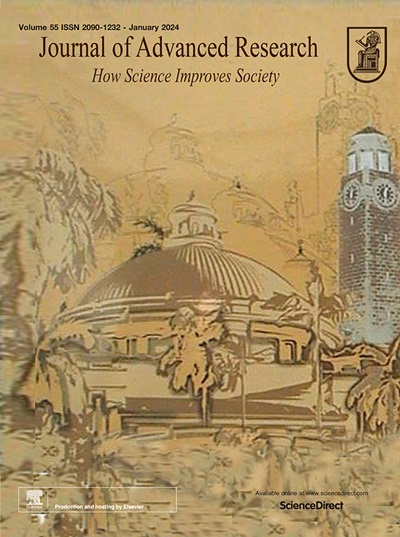Design of a sustained-release nanosystem for ultra-efficient absorption of anthocyanins and regulating lung damage through the “lung-gut” axis
IF 11.4
1区 综合性期刊
Q1 MULTIDISCIPLINARY SCIENCES
引用次数: 0
Abstract
Introduction
Anthocyanins have various health benefits but are limited by fast elimination and low bioavailability. Many studies have shown that nano delivery systems are effective in improving the intestinal absorption and bioavailability of anthocyanins. However, in the process of selecting anthocyanin nanomaterials, a dilemma is faced: numerous functional nanomaterials lack edible properties, it is difficult to meet the edible and functional requirements of nanomaterials simultaneously. Therefore, it is necessary and inevitable to select nano-anthocyanin carriers that are edible and have certain functional and morphological characteristics.Objectives
We aim to provide an efficient, sustained-release and easy to industrialize nanosystem method to solve the problem of low bioavailability of anthocyanins.Methods
A succinylated casein-phospholipid-anthocyanin nanosystem (CLS) was designed via computational chemistry-guided one-step self-assembly. Morphological, in vitro/in vivo digestion, pharmacokinetic were conducted. Furthermore, the effects of CLS on intestinal microecology were verified by using enteritis model animals, and the lung-targeting effect of CLS on lung health was verified by using lung injury model animals.Results
CLS exhibited 24-hour intestinal sustained release and lung-targeted enrichment. Pharmacokinetic studies showed 25.7-fold higher lung AUC(0-t) and 13.1-fold higher blood AUC(0-t) compared to free anthocyanins. CLS significantly alleviated lung injury and colitis in model rats via the gut-lung axis.Conclusion
This study significantly improved the bioavailability of anthocyanins and demonstrated the oral lung-targeting function of anthocyanins for the first time, paving the way for utilizing anthocyanins as dietary supplements and precision nutrition.

一种超高效吸收花青素并通过“肺-肠”轴调节肺损伤的缓释纳米系统的设计
花青素具有多种健康益处,但受快速消除和低生物利用度的限制。许多研究表明,纳米给药系统可以有效改善肠道对花青素的吸收和生物利用度。然而,在选择花青素纳米材料的过程中,面临着一个困境:众多的功能纳米材料缺乏食用性能,难以同时满足纳米材料的食用和功能要求。因此,选择可食用且具有一定功能和形态特征的纳米花青素载体是必要和必然的。目的为解决花青素生物利用度低的问题,提供一种高效、缓释、易于产业化的纳米体系制备方法。方法采用计算化学引导一步自组装的方法,设计琥珀酰化酪蛋白-磷脂-花青素纳米体系。进行了形态学、体外/体内消化、药代动力学研究。此外,通过肠炎模型动物验证CLS对肠道微生态的影响,并通过肺损伤模型动物验证CLS对肺部健康的肺靶向作用。结果cls具有24小时肠道缓释和肺靶向富集特性。药代动力学研究显示,与游离花青素相比,肺AUC(0-t)高25.7倍,血AUC(0-t)高13.1倍。CLS经肠-肺轴作用可明显减轻模型大鼠肺损伤和结肠炎。结论本研究显著提高了花青素的生物利用度,首次证实了花青素的口服肺靶向功能,为花青素作为膳食补充剂和精准营养的利用铺平了道路。
本文章由计算机程序翻译,如有差异,请以英文原文为准。
求助全文
约1分钟内获得全文
求助全文
来源期刊

Journal of Advanced Research
Multidisciplinary-Multidisciplinary
CiteScore
21.60
自引率
0.90%
发文量
280
审稿时长
12 weeks
期刊介绍:
Journal of Advanced Research (J. Adv. Res.) is an applied/natural sciences, peer-reviewed journal that focuses on interdisciplinary research. The journal aims to contribute to applied research and knowledge worldwide through the publication of original and high-quality research articles in the fields of Medicine, Pharmaceutical Sciences, Dentistry, Physical Therapy, Veterinary Medicine, and Basic and Biological Sciences.
The following abstracting and indexing services cover the Journal of Advanced Research: PubMed/Medline, Essential Science Indicators, Web of Science, Scopus, PubMed Central, PubMed, Science Citation Index Expanded, Directory of Open Access Journals (DOAJ), and INSPEC.
 求助内容:
求助内容: 应助结果提醒方式:
应助结果提醒方式:


